Different Walnut Tree Varieties & Types (Popular & Nut Bearing)
There are many varieties of walnut trees. They are long lived & nut bearing. However, the two most common edible ones are the English walnut and the Black walnut.
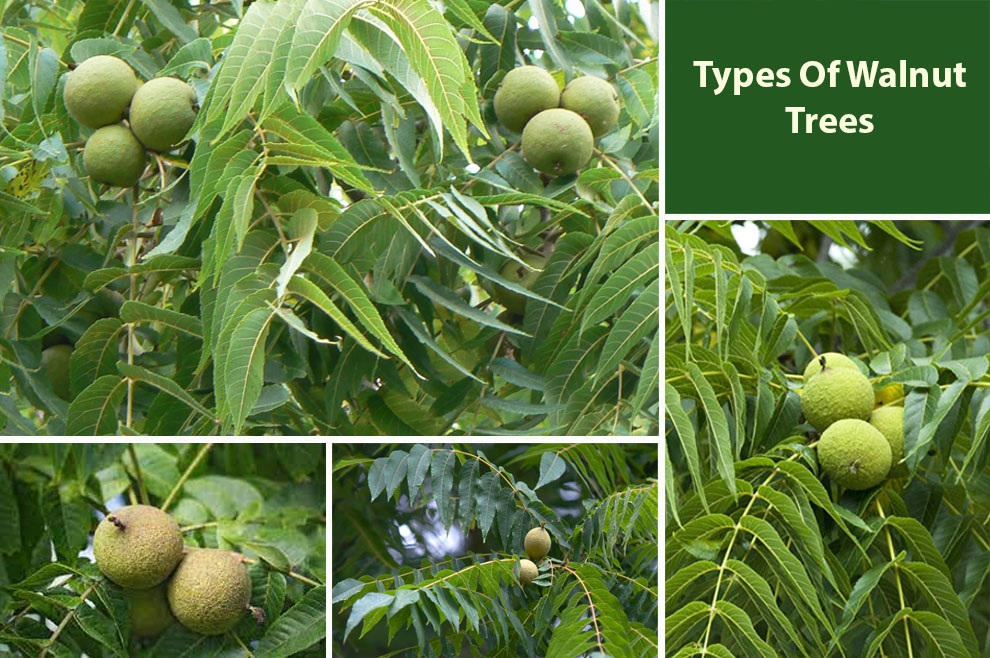
The Juglandaceae family comprises a remarkable diversity of walnut trees. Broadly, there are twenty to fifty different types of walnut trees. Despite this variety, the walnuts we usually consume predominantly come from two varieties.
These two most popular walnut trees are – Juglans regia, more commonly referred to as the English or Persian walnut, which traces its origins to Iran, and the second being Juglans nigra, known as the Black walnut, native to eastern North America.
But we also have a third mentionable walnut tree within the walnut family, the heartnut or the Japanese walnut.
While these three varieties stand out, the comprehensive range of walnut trees is not limited to them and extends far beyond, presenting a fascinating diversity in the Juglandaceae family.
You can grow walnut trees at home and in this guide we will tell you about your options. We will take you through different walnut tree species and point out notable varieties that contribute to this captivating botanical family.
Walnut Tree Identification
| Walnut tree’s scientific name | Juglans |
| Bark | Grayish-brown, rough texture |
| Leaves | Pinnate, 9 to 23 leaflets, serrated |
| Height | Varies depending on species, ranging from medium-sized (30-50 ft) to large (up to 100 ft) |
| Harvest time | Autumn |
| Where do walnut trees grow | Native to various regions, including Persia (Iran), eastern North America, and East Asia. Cultivated in many other suitable climates. |
Different Kinds Of Walnut Trees You Cannot Miss
The top 10 varieties of walnut trees are listed below:
- Black walnut (Juglans nigra)
- Butternut tree (Juglans cinerea)
- English walnut (Juglans regia)
- Northern California walnut (Juglans hindsii)
- California Black walnut (Juglans californica)
- Colombian walnut (Juglans neotropica)
Some less common walnut trees
- Juglans ailantifolia (Japanese Walnut)
- Juglans microcarpa (Little Walnut)
- Juglans major (Arizona Walnut)
- Juglans mandshurica (Manchurian Walnut)
1. Black walnut (Juglans nigra)
| Native to | Eastern North America |
| Growing condition | Thrives in rich, well-drained soils and full sunlight |
| Size | Grows up to 100 feet tall |
| Harvest time | Harvest in autumn |
A deciduous tree, Black Walnut is valued for its durable wood, richly flavored nuts, and ornamental appeal. They are known for their stately and tall growth, reaching 100 feet, with a spreading and broad canopy.
One standout feature of black walnuts is their compound leaves comprising several leaflets, with one larger terminal leaflet. Its leaves are deep green and are known for their lush appearance in the summer. They turn into a vibrant yellow in autumn, adding to the plant’s aesthetic appeal.
They are adaptable to different climates, making them versatile in various regions. Beyond their culinary significance, they are valued for their durability, strength, and rich dark brown color and go into cabinetry, furniture-making, and other woodworking projects.
2. Butternut tree (Juglans cinerea)
| Native to | North America |
| Growing condition | Thrives in well-drained soils and temperate to cool climates |
| Size | Grows up to 60 feet tall |
| Harvest time | Harvest in autumn |
Native to North America, the Butternut Tree, or Juglans cinerea, is commonly found in the central and eastern parts of the continent. It is a mid-sized deciduous tree known for its attractive wood and delicious nuts.
These plants are spotted in forested areas, open woodlands, and streams. As for the size, the Butternut trees grow up to 60 feet with a spread of 30 to 40 feet. These walnut tree varieties have a rounded crown and form a rough bark that is light gray.
Butternuts have a buttery and rich flavor. They are nutritious snacks and are also employed in cooking and baking. Beyond their culinary value, Butternuts have ecological significance.
They offer food and habitat for wildlife and small mammals. Its food is light brown and goes into woodworking and furniture-making.
3. English walnut (Juglans regia)
| Native to | Persia |
| Growing condition | Thrives in fertile, well-drained soils and mild to warm climates |
| Size | Grows up to 80 feet tall |
| Harvest time | Harvest in late summer |
Also called the Persian Walnut, the English Walnut is native to Persia (present-day Iran) but is widely cultivated in many regions worldwide. It has versatile nuts and flavors.
They grow to 80 feet tall but are pruned to a more manageable height for seamless harvesting and cultivation. English walnuts have lush, green foliage with a rounded canopy that offers shade and boosts its aesthetic appeal.
Besides culinary significance, they are valued for their durable timber employed in cabinetry and furniture making.
4. Northern California walnut (Juglans hindsii)
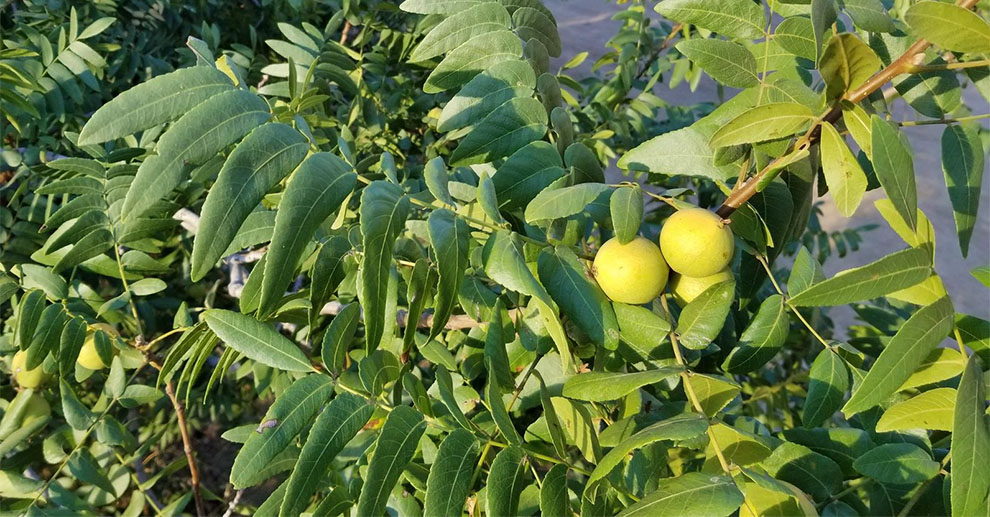
| Native to | California, USA |
| Growing condition | Flourishes in deep, loamy soils and Mediterranean climate |
| Size | Grows up to 50 feet tall |
| Harvest time | Harvest in late summer |
Northern California walnut is adapted to specific growing conditions and possesses unique characteristics that set it apart from other different kinds of walnut trees.
It grows with a spread matching its height and features a spreading, broad canopy with lush foliage that creates ample shade during the sunny summers. Its outer green husks split when the plant reaches maturity, and you can access its smooth-shelled nuts in the interior.
Once harvested, you can utilize the nuts in different culinary applications or as a nutritious snack. Beyond the culinary value, it also amplifies the aesthetic appeal of any space with its attractive foliage and graceful form.
Its wood is highly regarded for its durability and goes into woodworking projects and furniture making.
5. California Black walnut (Juglans californica)
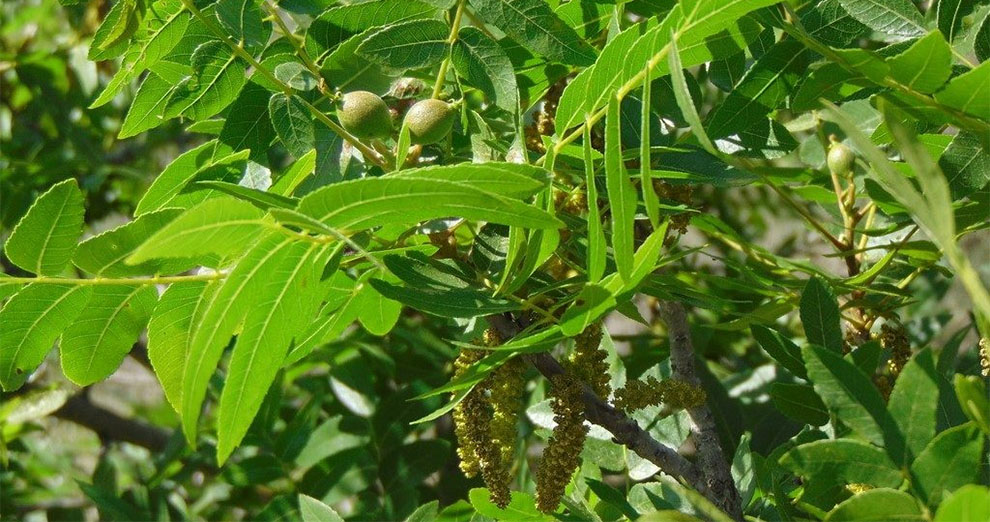
| Native to | California, USA |
| Growing condition | Flourishes in deep, loamy soils and Mediterranean climate |
| Size | Grows up to 50 feet tall |
| Harvest time | Harvest in autumn |
Well-adapted to the local growing conditions, the California Black walnut has unique characteristics specific to the region. It has a broad, spreading canopy with dark green foliage that offers shade during the sunny summers.
You can enjoy its nuts as a nutritious and tasty snack or employ it in different culinary applications.
These walnut tree varieties contribute to your landscape’s natural beauty, and their durable and sturdy wood is valued and goes into cabinetry, furniture-making, and woodworking projects.
6. Colombian walnut (Juglans neotropica)
| Native to | Colombia |
| Growing condition | Prefers temperate to subtropical climates, regular watering, well-drained soil, and can tolerate both full sun and partial shade. |
| Size | 30-40 meters |
| Harvest time | November and January |
Columbian Walnut is a fascinating tree that holds both economic and ecological importance. As a member of the walnut family, this variety showcases distinct characteristics and offers abundant benefits to the local communities and surrounding ecosystem.
It is well-adapted to diverse growing conditions, and its straight and tall growth makes it a majestic sight in the landscape. The tree’s foliage offers valuable shade, benefiting other plant species and contributing to the overall biodiversity.
Moreover, its deep-rooted system also helps avoid soil erosion, guards watersheds, and stabilizes slopes. Furthermore, its lush foliage contributes to air purification and helps mitigate the impact of climate change.
You might also like: Hazelnut tree varieties
Some Other Different Types of Walnut Trees (Relatively Less Popular)
Now let us take you through a few less popular varieties in walnut trees. They may not be as frequent a sight as the other species above but are still valuable.
1. Juglans ailantifolia (Japanese Walnut)
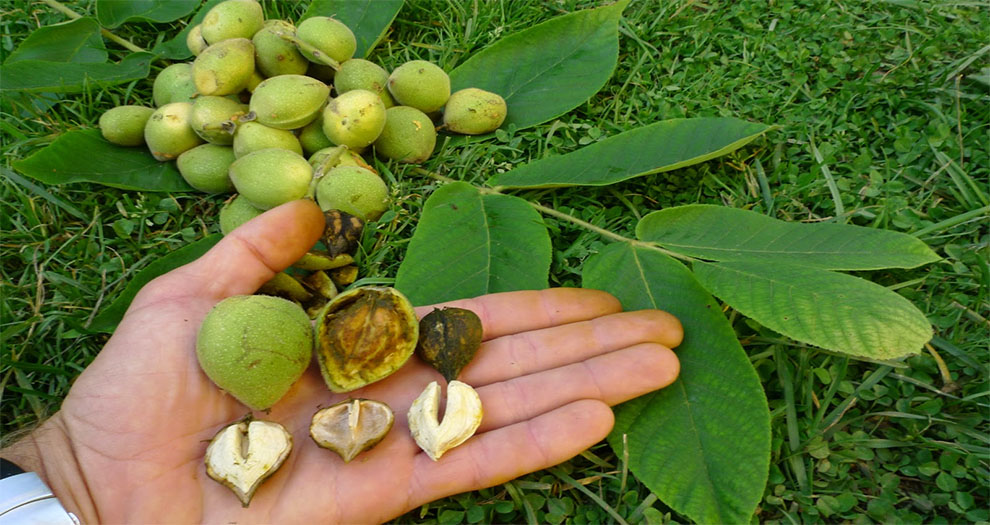
Commonly known as the Heartnut or Japanese Walnut, Juglans ailantifolia is native to Korea and Japan. It is valued for its attractive appearance and unique heart-shaped nuts.
The tree thrives in temperature climates and can adapt to different soil types. However, it cherishes well-drained soil.
Japanese Walnut grows to a moderate size, reaching an average height of about 30 to 50 feet. The tree has a spreading canopy with compound leaves comprising several leaflets.
One standout attribute of this specie is its heart-shaped nuts. They have a mild buttery flavor and a smooth shell. These nuts are commonly enjoyed fresh but go in cooking, confections, and baking.
2. Juglans microcarpa (Little Walnut)
Also known as the Texas Walnut or Little Walnut, the Juglans macrocarpa is a walnut tree native to the SouthWestern United States, mainly northern Mexico, New Mexico, and Texas.
Despite its name, the Little Walnut grows to medium size, approximately 30-50 feet. They can thrive in different soil types, including well-drained soil, but are better suited for semi-arid or arid regions of the native habitat.
Little Walnuts are resilient in dry climates and are known for their adaptability to drought conditions. They have a spreading canopy with pinnate leaves. They have ridged and grayish-brown bark.
Its nuts are small but have a rich, flavorful taste. They come encased in a hard, thick shell and are consumed by wildlife, including birds and squirrels. Humans enjoy them, too, as a nutritious snack.
3. Juglans major (Arizona Walnut)
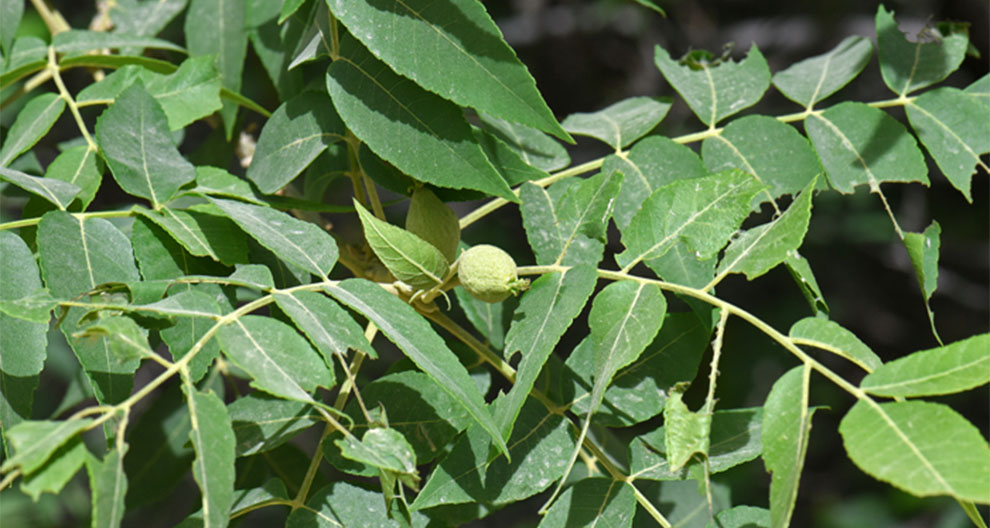
Juglans Major, or Arizona Walnut, is a walnut tree species native to the Southwestern United States, typically New Mexico, Arizona, and parts of Mexico.
It thrives in semi-arid and arid regions and different soil types, including well-drained soils. However, the plant can also endure drought conditions.
You will find it growing alongside streams and in canyons, as it benefits from the water in its proximity. The tree reaches 50 feet and has a rounded canopy with compounded leaves.
Its nuts are mid-sized and have a buttery, rich flavor. The Nuts are a food source for different wildlife species.
They have an economic and cultural appearance, and their wood is loved for its attractive grain patterns and strength, making it sought after for use in furniture making, cabinetry, and woodworking projects.
4. Juglans mandshurica (Manchurian Walnut)
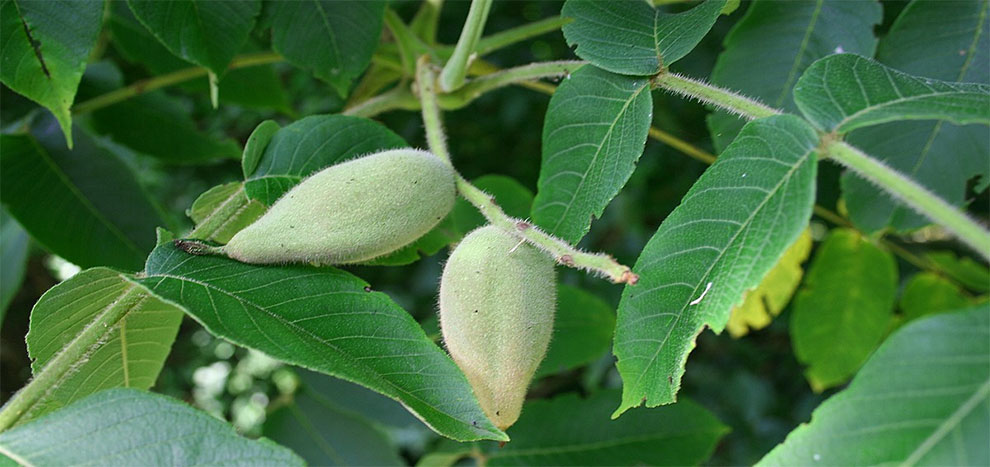
Commonly called the Manchurian Walnut, Juglans mandshurica walnut tree varieties are native to East Asia, particularly China and Korea. It is valued for its round, large nuts, and timber quality.
The tree is adaptable to different growing conditions and can thrive in various soil types, including well-drained soils. They prefer temperature climates with distinct seasons and grow between 40 and 60 feet.
These trees have pinnate leaves and a spreading canopy. A notable attribute of this specie is its round, large nuts with a hard, thick shell. The kernels within the nuts are rich in flavor and are consumed fresh or employed in baking or cooking.
The tree yields top-quality timber and is prized for durability, strength, and attractive grain patterns. It goes into different applications, such as cabinetry, flooring, and furniture making.
What Is The Biggest Walnut Variety?
Known for its substantial size, the CITH Walnut-1 yields sizable nuts with plump, ample, and pale-colored kernels. These generous kernels are secured and enveloped by a sleek and gentle shell.
What Are The Most Expensive Walnut Trees?
With its superior dark timber, the Black Walnuts stand out as a profitable and highly valued tree, commanding a premium price in the market. The lifespan of Black walnut trees is also decently long.
What Is The Smallest Walnut Variety?
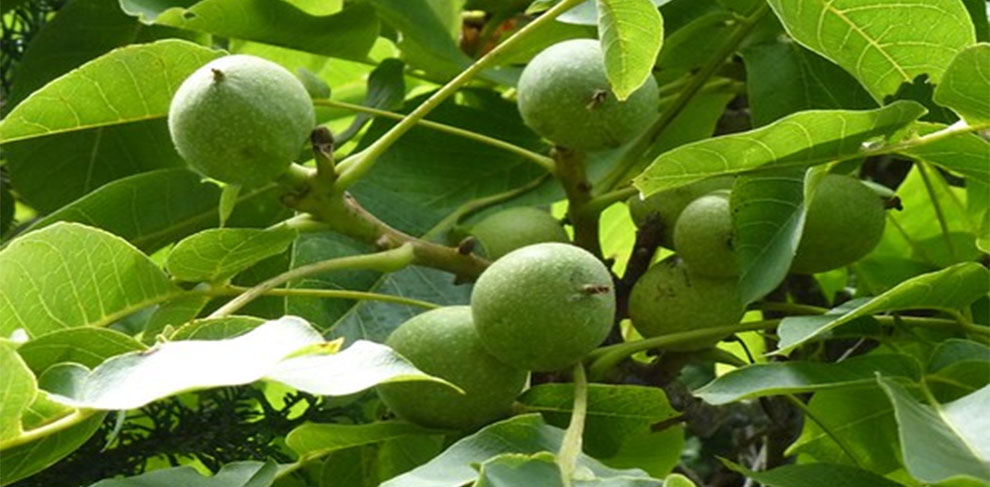
Also known as the Texas Walnut, the Little Walnut is a compact deciduous shrub or tree among the different types of walnut trees. It has lightly furrowed or smooth branches, creating a rounded and wide canopy.
The tree’s foliage is pinnate and has narrow and long yellow-green leaves. The walnuts of these walnuts are the most diminutive among all the species from the Juglans genus.
Which Are The Trees That Look Like Walnut Trees But Are Not?
Some trees that look like walnuts but are not are Hickory trees, Pecan trees, Butternut trees, Wingnut trees, Beech trees (in some cases, the leaves may bear a resemblance), and Chestnut trees (some species have similar leaf structures).
Please note that while these trees may have some visual similarities with walnut trees, they belong to different plant families and have distinct uses and characteristics.
